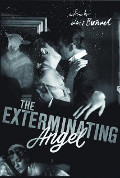
Mexico 1962
Directed by
Luis Bunuel
95 minutes
Rated M
Reviewed by
Bernard Hemingway


The Exterminating Angel
One of Buñuel's best-known films and one that propelled his international resurgence as a director after the success of Nazarin (1958), The Exterminating Angel is in many ways a fully-developed statement of his (and Salvador Dali's) surrealist classic Un Chien Andalou (1928) - severed body parts, unmotivated repetitions, dream sequences are among the devices mixed into the already bizarre-enough basic scenario which, according to Buñuel's son, was, inspired by Géricault's famous painting The Raft of Medusa (the titles give credit to a "cinedrama" by Buñuel and Luis Alcoriza entitled Los Naugrafos de la Calle de la Providencia, itself apparently freely adapted from an unpublished play by José Bergamin).
The film does indeed symbolically depict a kind of shipwreck as a group of well-to-do, high society people after a dinner party at an upscale restaurant, find themselves inexplicably unable to leave the room they are in and over the course of the ensuing days largely degenerate into a "pre-civilized" condition.
Although what is "the exterminating angel" is open to conjecture, the film is clearly intended as an allegorical exposition of the director's contempt for the hollowness of bourgeois society in particular, and as the final segments suggest, of all social structures in general. In this respect it is more polemically didactic than dramatically engaging. The film is nevertheless one of the most remarkable examples of cinema as art with a fine albeit anachronistically old-fashioned visual style provided by the director's Mexican DOP, Gabriel Figueroa.
Want something different?





